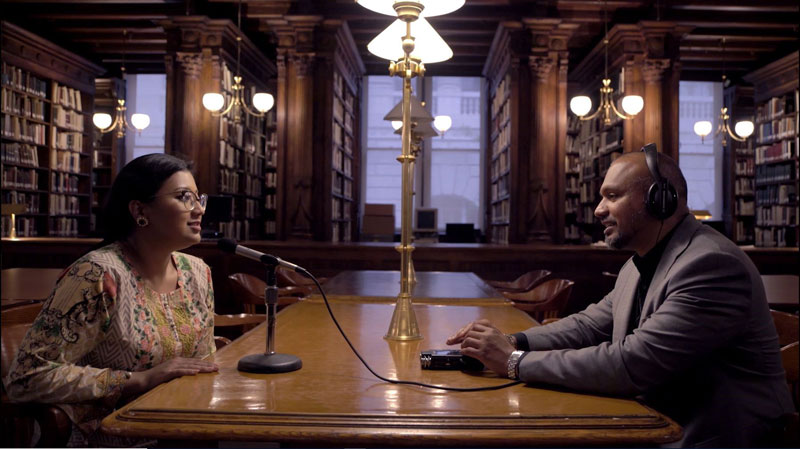Oral histories integrated into exhibitions and school curricula

In 2017, against a background of rising hate crimes and Islamophobia, the Center for Brooklyn History at Brooklyn Public Library (formerly known as the Brooklyn Historical Society) used grants from The Trust to launch an oral history project that brings to light the multifaceted communities of Muslims that have lived in the borough for decades.
The goal of “Muslims in Brooklyn” is to provide an opportunity for Muslim residents to tell their own varied and nuanced stories, and to promote wider understanding among non-Muslims.
The project also aimed to underline the history of Muslims in Brooklyn: The first building to be dedicated to Muslim prayer was built in 1931, and today the borough is home to more than 100 mosques. In recent years, though, the Council on American-Islamic Relations and the New York Police Department have recorded huge increases in anti-Muslim incidents.
“The impact of Muslims in Brooklyn cannot be overstated,” said Heather Malin, the Center’s director. “The project has touched every aspect of our work, including collections, exhibitions, education and curricular resources, and public programming. But perhaps most important is that we have formed relationships with members of Brooklyn’s diverse Muslim communities, and their voices are now reflected in our collections, which are fully accessible to Brooklynites and the world.”
A Wide Variety of Subjects
The project was composed of interviews with more than 50 Brooklynites from the Middle East, South Asia, Africa, and the Caribbean, as well as African Americans, and included those from different Islamic traditions.
In the 90 hours of recorded conversations, the interview subjects talk about their interior lives—speaking about gender, religious observance, interfaith families—as well as about the everyday institutions of their lives, the arts, and their immigration stories. For example, one woman recalls her experiences running a Girl Scout troop of Muslims from different ethnic backgrounds, another speaks about immigrating from Bangladesh as a teenager by himself and how getting a cup of coffee led to his first job, and a Pakistani man recounts making friends from other cultures and going to his first bar mitzvah.
“It felt really cathartic,” one interviewee later told The Bklyner. “It made me appreciate my place in this city.”
The interviews were posted to the Center’s oral history portal on its website and publicized via news outlets, podcasts, social media, and public events. In 2019, the Center hosted several in-person events on a range of related topics, from hip-hop to living under government surveillance, and included music and dance performances. It also commissioned an art installation at the Center that featured audio clips from the interviews, and an exhibition at BRIC House in downtown Brooklyn of works by Muslim visual artists.
In 2020, the Center used the oral histories as the basis for a curriculum for K-12 teachers, then introduced it to 400 educators via one-on-one professional development sessions. The teachers, in turn, worked with their 25,000 public school students.
One teacher wrote the Center, saying that the training was “moving and emotional and showed that we are all humans and need each other.”